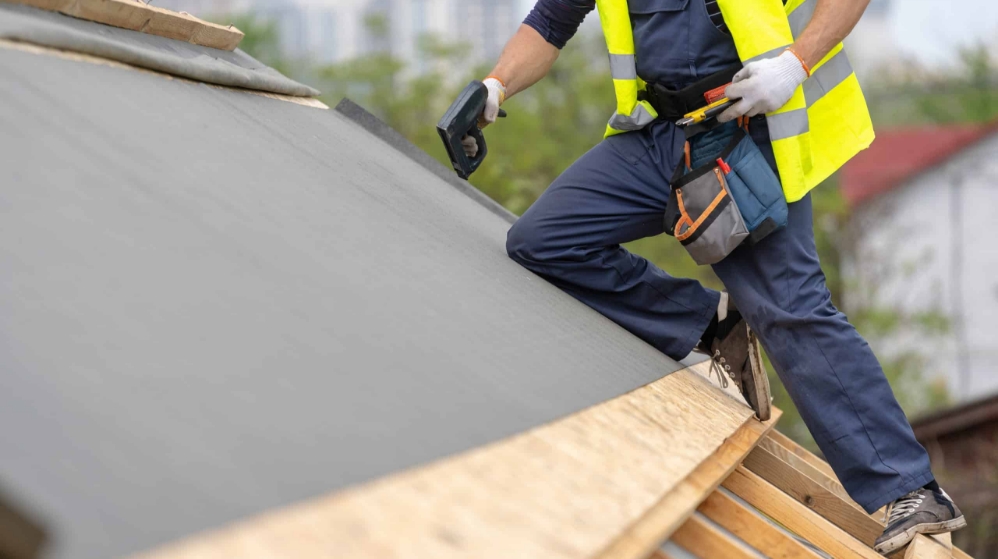A roof is one of the most critical components of a home, providing protection against the elements and maintaining the structural integrity of the building. Over time, roofs naturally wear out and may require replacement to ensure continued safety and comfort. Identifying the signs that you need a new roof can help prevent more severe damage and costly repairs. This article explores the key indicators that suggest it’s time to consider a roof replacement.
Visible Damage and Wear
Cracked, Curling, or Missing Shingles
One of the most apparent signs that your roof may need replacing is the condition of the shingles. If you notice shingles that are cracked, curling at the edges, or missing entirely, it’s a strong indication that the roof is nearing the end of its lifespan. Shingles protect the underlying roof structure from water infiltration, and when they are damaged or missing, it can lead to leaks and further deterioration of the roof deck.
Granule Loss
Asphalt shingles lose granules as they age. These granules are essential for protecting the shingles from UV rays and increasing their fire resistance. If you find granules in your gutters or notice bald spots on your shingles, it indicates significant wear and tear. Granule loss can accelerate the aging process of shingles, making them less effective and more prone to damage.
Sagging Roof
A sagging roof is a severe issue that often indicates structural problems. It can be caused by prolonged water damage, insufficient support, or a combination of both. If you observe any areas of your roof that appear to be sagging or dipping, it’s crucial to contact a professional immediately. A sagging roof poses a significant risk to the safety of the home’s occupants and requires prompt attention.
Moss and Algae Growth
While moss and algae growth on a roof might seem like a minor issue, it can indicate deeper problems. Moss retains moisture, which can lead to the degradation of roofing materials. Over time, this moisture can seep into the roof deck and cause rot. If you notice extensive moss or algae growth, especially in areas that don’t receive much sunlight, it may be time to consider a roof replacement.
Interior Sings of Roof Problems
Water Stains on Ceilings and Walls
One of the clearest signs of a roof leak is the presence of water stains on ceilings and walls. These stains are often brown or yellow and indicate that water is penetrating through the roof and into the home. Even small stains can suggest a significant problem, as water can travel far from the source of the leak before becoming visible inside the home. If left unaddressed, leaks can lead to mold growth and structural damage.
Attic Leaks
Checking your attic for signs of leaks can also reveal roof problems. Look for any signs of water infiltration, such as damp insulation, water stains on the rafters, or a musty smell. During a rainstorm, use a flashlight to inspect the attic for any signs of water dripping or areas that appear wet. Identifying and addressing leaks early can prevent more extensive damage to your home.
Increased Energy Bills
A well-insulated roof helps regulate the temperature inside your home. If you notice a sudden increase in your energy bills, it could be due to a roof that is no longer providing adequate insulation. Drafts and air leaks caused by roof damage can make your heating and cooling systems work harder, leading to higher energy costs.
Mold or Mildew Growth
Mold and mildew growth inside your home can indicate a roof leak that is allowing moisture to enter. Mold and mildew can pose health risks to the home’s occupants and can also cause significant damage to the interior structure. If you notice mold or mildew, particularly in the attic or upper levels of your home, it’s essential to investigate the cause and address any roofing issues promptly.
Conclusion
Recognizing the signs that you need a new roof is crucial for maintaining the safety and integrity of your home. Visible damage to shingles, sagging roofs, and signs of leaks or moisture inside the home are all indicators that it may be time for a roof replacement. Regular inspections and prompt attention to any issues can help extend the life of your roof and prevent costly repairs down the line. If you notice any of these signs, consider consulting with a professional roofing contractor to assess the condition of your roof and determine the best course of action.
